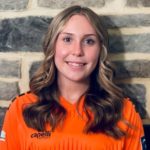ECNL in depth, Part II: League execs explain unique governance, talent ID processes
By Jimmy LaRoue
EDITOR’S NOTE: The Soccer Wire recently held wide-ranging conversations with several of the Elite Clubs National League’s most prominent coaches and executives. This is the second installment in a three-part series profiling the ambitious league.
Here, ECNL president Christian Lavers, vice president Douglas Bracken and secretary Jason Dewhurst explain the league’s structure, growth and the challenges that lie ahead. Lavers is an attorney who also serves as FC Milwaukee’s USSDA and ECNL technical director, and executive vice president at U.S. Club Soccer. Bracken is director of coaching for Ohio Elite Soccer Academy, and Dewhurst is the founder and director of coaching of FC Stars of Massachusetts.
Continuing the discussion of ECNL’s goals and mission, Lavers explained there are three main components to what the ECNL does:
• A competitive platform of top games against the best clubs on a regular basis that leads to a national championship
• A scouting-based player identification process, at no cost to the player
• Club development and club education – “elevating the game and trying to raise standards of what it means to be a professional youth soccer club and a professional youth soccer coach,” Lavers said, noting that this aspect is still in its infancy.
He said the purpose behind the latter component is to help coaches and clubs become more organized and effective, while sharing in best practices and increasing standards.
“We’ve got the buy-in, we think,” Lavers said. “We’ve got 66 of the best clubs in the country…There’s always going to be people that say this club is better than that one and they should be in and they should be out. I mean; that’s life. People can disagree, but no one can disagree that we have the best clubs in the country in one competition, and anyone who comes to mind as an obvious top-20 club is in this competition.”
As Dewhurst pointed out, of the top 30 clubs as most recently ranked by Soccer America, 27 are in the ECNL.
Lavers said everyone in the ECNL has input into how the league is operated. At the core of league by-laws is the concept of ‘one member, one vote.’ Every member club gets one vote on major decisions, such as electing a board of directors, voting to accept new members and major competition standards. And though that structure might not be unique, the people who are voting are.
In the ECNL, member clubs must have their Director of Coaching as the voting league member representing them, and they must have full authority to act on their club’s behalf when making such decisions, eliminating decision-making bureaucracy and putting decisions in the coaches’ hands.
Bolstered by a visibly high level of play on the field, the ECNL model has proved popular.
“It grew really fast,” Lavers said. “Where we are now, this is year three. We set the goal of a full calendar of competition for year five. Once this started, once this took off in year one, everybody got pretty excited real quick and wanted to jump in and do everything fast. One of our challenges has always been, ‘How do we grow this carefully so that we don’t blow up by going too far, too fast?’”
More than 150 ECNL scouts now watch games, and the league’s database includes hundreds of players that have been identified and rated. The league’s identification program now includes 10 different conference-based Player Development Program events across the country, and a national training camp operated in conjunction with U.S. Club Soccer’s id2 Player Development Program, all free for the players, Lavers said.
Like other figures in the game who are taking a second look at American soccer’s dominant “pay to play” model, Bracken said ECNL decision-makers are trying to address the perception that it’s only an affordable option for the best players and the best teams.
“We’re trying to change that,” Bracken said.
There is some evidence that change is already taking place, at least in terms of reducing barriers between national team exposure and family income. The ECNL, with the help of Nike and U.S. Club Soccer, completely funds players’ attendance at National ID Camps, and from those camps, the league and Nike fully funded the aforementioned all-star squad’s trip to Europe.
While those players may still be paying to be members of their clubs like any other player in the United States, fully covering players’ costs to attend major ID camps and trips abroad is a major difference from other long-running options for exposing worthy players to the next level, like U.S. Youth Soccer’s Olympic Development Program.
With a long history of looking for the best players and moving them up the ladder towards national team opportunities, ODP has identified many top players over the years. But that structure exists outside of decisions made by clubs, where players spend most of their time. And, in the ODP setup, advancing to higher levels and going on international trips is almost inevitably tied to whether each player’s family can afford the additional fees.
US Club Soccer id2 and ECNL have removed that aspect, though unlike these programs, U.S. Youth Soccer ODP expenses do come with actual series of supplemental training. But if players can’t afford the next level, they risk losing the opportunity for exposure to the national teams, where the all-expense paid model re-enters the equation.
With the third season in full swing, the application period for new clubs closed on Jan. 15, so the task now will be to decide which clubs may be added for year four. But with 66 clubs already in, members have concerns about diluting the ECNL. Dewhurst said the league needs to look at its geographic model while making sure the quality remains at a high caliber.
“If a club is good enough, we want them in,” Lavers said. “But at some point, the talent, the quality of the talent pool, it drops at some point, and again, you have different opinions of where that is. And we balance that with geographic requirements for travel and competition.”
Going forward
The ECNL, Lavers said, is the girls’ equivalent to the United States Soccer Federation’s Development Academy for boys, the federation’s attempt to bring the nation’s top talent into a competitive, professional environment earlier in their careers.
“We’ve taken a lot of ideas from what they did, as they really changed the landscape and dialogue in youth soccer,” Lavers said. “Soccer is nothing if not looking at other ideas and copying them – then adding your own ideas.”
The federation’s work with the DA, according to Lavers, made it easier to get the ECNL established, with the girls having similar problems to the boys in terms of getting better and fewer games.
“It’s not a complicated recipe,” Lavers said. “If you take the best clubs, let them play each other on a regular basis, eliminate some of the games they used to play that weren’t competitive so that they’re only playing good games, and then allow them to train more because you’re eliminating some of the games that they used to play and replacing them with trainings, your players get better. Players always get better with more good training, and better training-to-game ratios.
“Players get better when they’re playing better games. Doing that alone is going to help make players better.”
It’s also working to improve coaching, with the Development Director for the U.S. women’s national teams, Jillian Ellis, and U.S. soccer’s director of coaching education Dave Chesler speaking at ECNL workshops about what they’re looking for in the national team.
“If our coaches get better, our players get better,” Lavers said.
Bracken, Dewhurst and Lavers noted that membership in the ECNL isn’t a guaranteed. Each club has to meet expectations and standards, not just in competition, but eventually also in coaching, licensing, training frequencies and facility standards, as well as the club’s administration, website, scouting games and turning in paperwork on time.
And with season three wrapping up this summer, the possibility of clubs being at least put on warning is likely very real, as the line of clubs wanting to come into the ECNL would make the league too large for its leaders.
“I think philosophically, if you want to be called elite, you can’t have 150 clubs,” Bracken said. “I mean, there’s a cap. We just can’t say ‘elite’. That number is, in our view, at least 66, I guess, at this point.
“Including more players in the league does elevate those players and does help elevate the game, which is our ultimate goal, but I think philosophically, we all understand in order to be an elite league, everybody can’t be in it. So we’re going to pick and choose, with feedback of all the clubs that are in it, as to what the best route is.”
[ +See PSW’s exclusive coverage of last summer’s ECNL England trip here ]
Next week: our conversation with Lavers, Bracken and Dewhurst concludes with discussion of travel, scheduling, politics and other challenges on the horizon.











